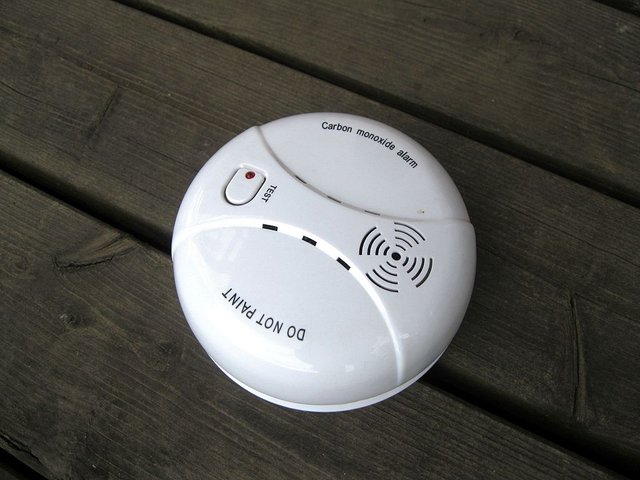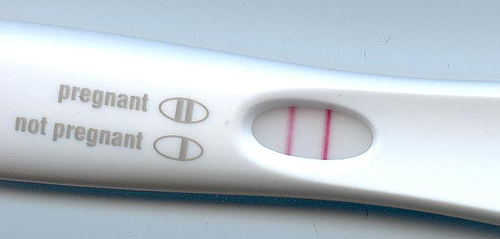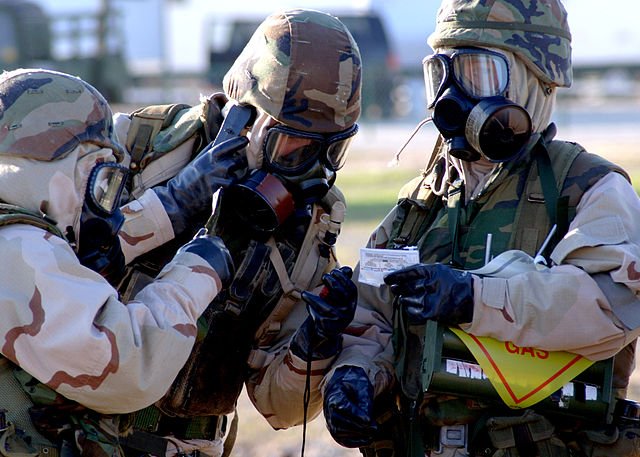A Safer and More Informed World with the Chemical Sensing Devices
In this part of the clime, there have been deaths that were "mysterious", and some giving rise to conspiracy theories. Rumours and blame are usually the norm. At the end of the day, the cause of death all points to the sneaky, tasteless, and odourless gas; the carbon monoxide from the exhaust fumes of generators placed too close to the living quarters.
Well, it is odourless to humans but not for a carbon monoxide detector.

Wikipedia CCO: A Carbomonoxide Detector
There are a variety of gas, fire, and smoke detectors out there in the market. All have the functions of raising the alarm when there is the dangerous presence of poisonous fumes/ particles in the vicinity of placement.
Many had perished as a result of carbon monoxide poisoning, gas leaks, or any other harmful chemical that is invisible to the human's eye. When noticed, it is already late/fatal. Those victims would have lived if they installed a chemical sensing device that is often powered by a small battery.
These devices are often cheap, small and rugged.
There are lots of chemical sensors on the market. But there are two significant properties of them all; selectivity, and sensitivity.
Going by a large number of molecular substances present around us, the alarm of these detectors should not go off on encountering them; thus it is selective.
Sensitivity has to do with the levels of presence of a substance that the sensor could detect and at what distance to the sensor.
These two properties together with the limit of substance presence to trigger an alert, response time, and size of a sensor are some of the essential features of a chemical sensor.
The sensors work by detecting analytes or the intended molecules via a specific chemical reaction that produces either an alarm or colour change to inform us of particular gas molecule presence.
There is three primary type of sensor mechanism:
i. One that acts as a trap with eyes only for the analyte,
ii. The kind that selectively filters in the analyte while blocking out other molecules; and
iii. The type where the analyte triggers a chemical reaction that results in an alarm going off or any other signal displayed.
Other kinds exist as above is a generalised format of these sensing devices.
Types like the direct-read type of sensor react to the presence or concentration of the analyte as it gets to the sensor. An example is the direct-read electrochemical sensor.
The changes in electric properties such as conductivity, potential, current etc. caused by the diffusion of charged molecules identify a specific analyte's presence.
Some sensors employ acoustic waves where a loss in the wave or its speed signifies the presence of a specific analyte.
These minute changes are carefully tracked as a means to check for the presence of an analyte.
The innovative MIT researchers have found a way to use infrared as a chemical sensor. The technology leveraged on infrared's property of being able to identify wavelength over a wide band range. The sensors can now target a specific chemical property
But selectivity in a sensor plays a major role. It is the difference between a good sensor that detects when the right amount of analytes are present and a bad one that triggers at the least presence of an analyte giving off a false alarm
Most times you are better off with an analyte-specific chemical sensing device as the one-sensor-senses-all devices have been known to trade sensitivity and selectivity in the bid to cover a wider range of sensing capabilities. Such compromise on efficiency comes at an even bigger cost to the buyer.
The chemical sensing is not just for getting you out of the harm's way but have a lot of application in the medical.
One popular one is the home pregnancy kit.
Here the principle of operation remains the same. The hormones have the properties of a molecule.
In the pregnancy test kit, the hormone, human chorionic gonadotropin (HCG) which is produced by the placenta when the fertilised egg clings to the uterine wall, found in urine, is the target. If present, the test kit has a chemical sensor that reacts with HCG to give off a particular colour for positive pregnancy result or a negative one if absent.
Other Applications of Chemical Sensing Devices
The military stands to gain in the advancement of chemical sensing devices. It could be a lifesaving device if they could develop a chemical detector able to detect toxins and explosives four miles from their location.
Chemical warfare using chlorine, phosgene, and mustard gas, had its dark past with the World War I claiming up to 1.3 million lives, about 100,000-260,000 were civilians caught in the crossfire.
The military of today is working on ways to preempt a chemical attack on the civilians and them. Terrosism is growing so is the science of counterterrorism. Forget metal scanners, how about a chemical sensor that targets one of the active ingredients in bombs like TNT (Trinitrotoluene )? Having such devices in airports and borders could help prevent the trans-border transport of weapons capable of causing mass murders.,
Then there is the peaceful use of chemical sensing devices in water treatment as a device to detect impurities and contaminants.
It would be good to get one or two, since it is inexpensive, and install in our homes and never worry about that gas leak, fire hazard, carbon monoxide poisoning, etc. If you already have one, consider replacing the battery if it is up to 6 months old.
About 430 deaths occur in the USA from carbon monoxide poisoning alone every year. Do not be a part of this statistics; get a CO2 sensor today.
Thanks for reading.
REFERENCES
If you write STEM (Science, Technology, Engineering, and Mathematics) related posts, consider joining #steemSTEM on steemit chat or discord here. If you are from Nigeria, you may want to include the #stemng tag in your post. You can visit this blog by @stemng for more details. You can also check this blog post by @steemstem here and this guidelines here for help on how to be a member of @steemstem.



Quite informative, I think this sensors should be recommended to every home in Nigeria making use of generator so they can easily detect the presence of carbon monoxide in the house.
It's a great gadget to have.
Wow! This is really amazing @greenrun.
I've always wondered how the pregnancy kit was always able to detect pregnancies via urine. This post really makes the concept much clearer.
And knowing that same technology applies to harmful chemical detection gives one a sense of relief, knowing that something very portable can contribute in keeping us safe.
Thanks for this enlightening piece @greenrun.
Thank you @greenrun. Something so small can save many lives!
The little things that matter :)
As a chemist, I fully understand the important of chemical sensors and their application. Especially in the homes, in forensic application and in counter terrorism. The figures for CO related death is high in most African countries where most of the populace do not know the danger associated with having a generating set inside a room. Thank you for sharing this, I hope it makes the impact
This post is well detailed sir😋😎
Thanks for sharing this post. I have seen with my two naked eyes where a whole family of four were wiped away by monoxide poisoning from generating set. Many people should reaad this and keep to the rules of keeping gen sets away from their rooms, especially when going to bed. Well done.
I hate generators as a source of power. It does a lot of harm to both environment and the users. Though many due to fear of theft tend to keep it very closer to their home. I'd rather it's stolen than it to kill me. Thank you.
Carbon monoxide is a silent killer, why? because we can easily detect or got choked by carbondioxide and we may decide to change our position but carbon do not immediately. This sensor device is nice invention.
#steemsoccer1
It's a sneaky gas. It gets around invisible to us. Only a detector could "see" it. Thanks a lot.
This device is will be very useful we' ve hard scenario that a whole family perished because of this killer gas and many other instances that has led to tragic conditions. Thanks @greenrun for this sensitization and please we that have known about it let get this device and sensitize other. Definitely i'm reblogging this
@eprolific, thanks a lot.
There are loads of other chemicals still that are hazardous but are rarely talked about, look at lead in paints, varnishes, cleaning chemicals and asbestos found in our roofs or chemicals given off by plastics when they heat up or exposed to high temperatures.
We still have a long way to go as countries and a world as a whole.
The change can only start with one person at a time. Thanks for dropping by.
Your posts are always informative. I don't know if this chemical sensors are sold in Nigeria. So many lives have been lost due to Carbon monoxide poisoning here in Nigeria. The use of power generating sets is the major cause of this. The chemical sensor will go a long way to save lives.
The possibilities you mentioned are quite interesting too especially for purifying water a day detecting bombs. Basically more should be done to create chemical sensors that not only warn but also prevent deaths. Peace
Thanks for reading.
Unfortunately we are exposed to it on a daily basis...exhaust from faulty cars in the road... Generators...
Thank God for this invention....but our government can do better...lets kill the source of this poisonous gas